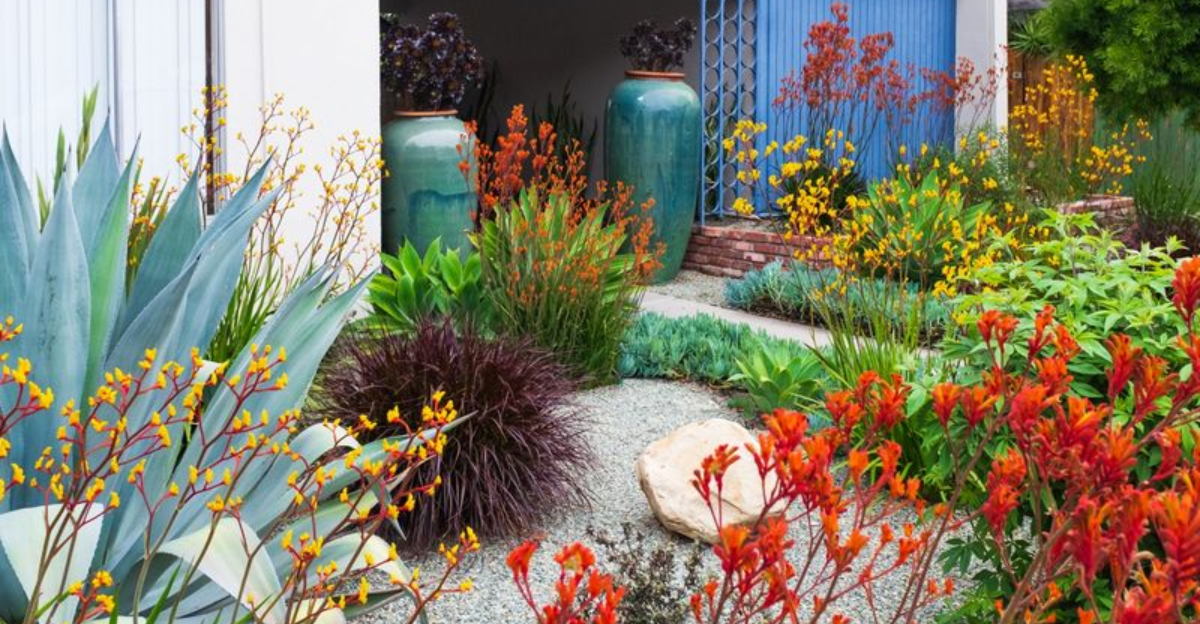Front yard landscaping sets the first impression, and lately I’m all in on the rock-and-mulch combo. It’s not just about looks—these materials seriously cut down on upkeep, conserve water, and solve the headache of stubborn lawn patches.
Whether you’re leaning into a sleek, Southwestern vibe or just want less yard drama, rocks and mulch deliver beauty with brains. It’s a curb appeal upgrade that works hard and looks even better—all without a mower in sight.
1. Drought-Tolerant Rock Garden
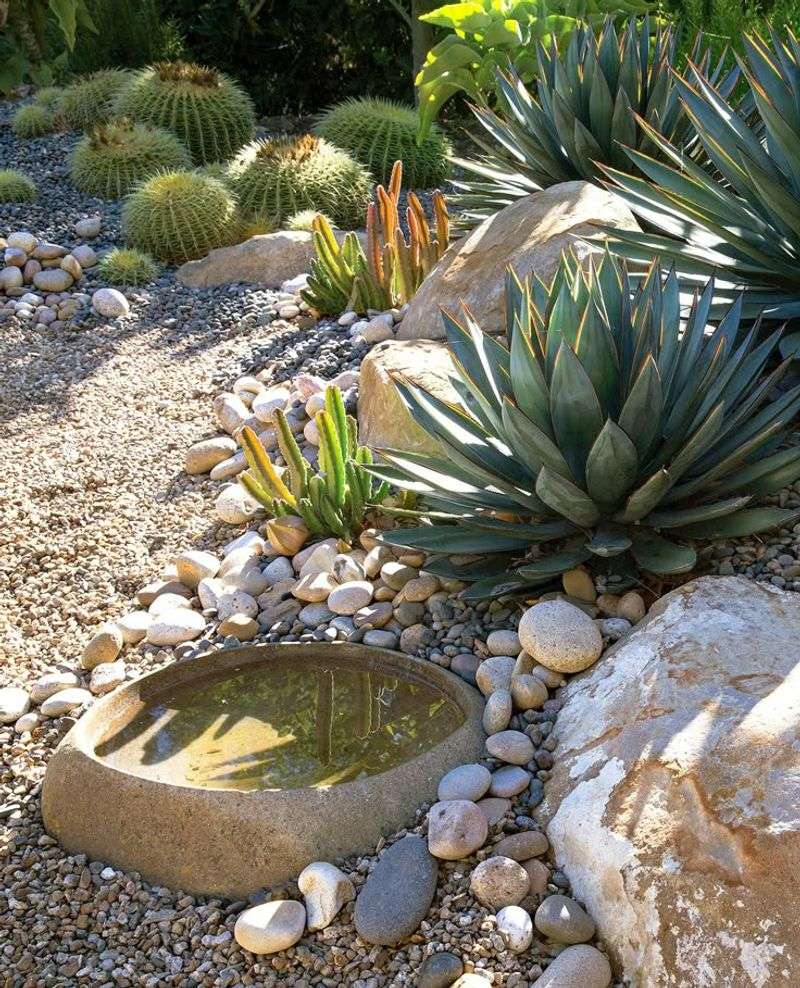
Creating a rock garden with drought-resistant plants saves gallons of water annually. Native succulents and ornamental grasses planted between carefully positioned stones require minimal watering once established.
The various textures of smooth river rocks alongside spiky agave plants create a natural-looking landscape that thrives in hot, sunny conditions.
Bonus points if you collect rainwater to handle the occasional watering needs!
2. Zen-Inspired Gravel Paths
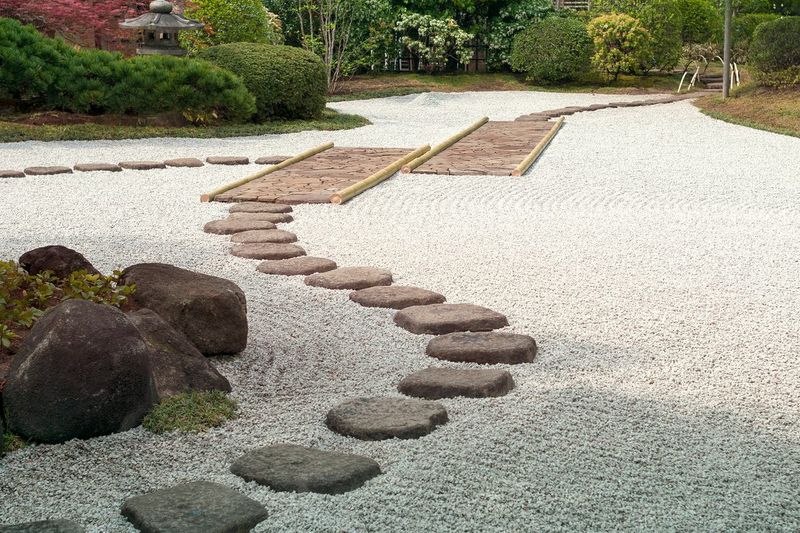
Sometimes the simplest designs make the strongest statement. Winding gravel paths through your front yard create a meditative atmosphere while providing practical access to different areas.
Light-colored crushed granite reflects heat rather than absorbing it, keeping your yard cooler in summer months.
Add a few strategically placed boulders and Japanese maple trees for pops of color that change with the seasons.
3. Mulched Tree Islands
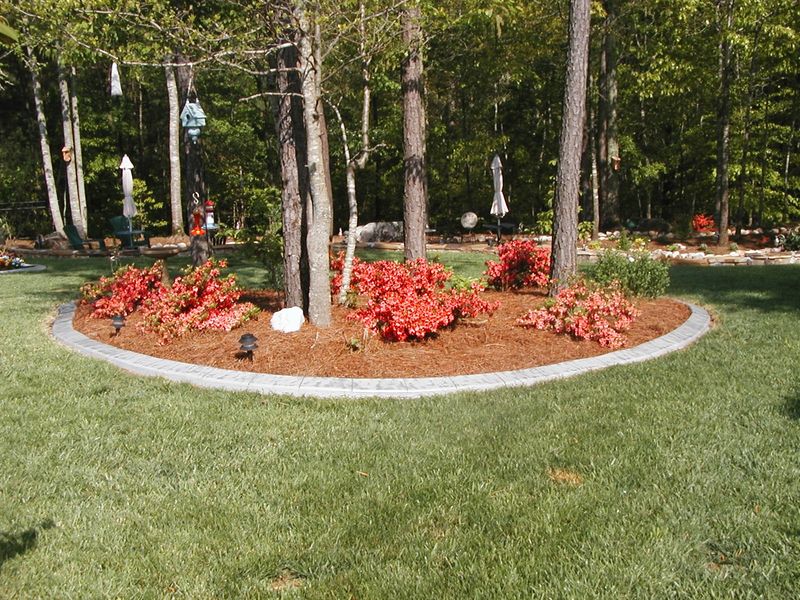
Trees surrounded by mulch islands bring structure to your front yard landscape. Cedar or pine mulch works wonderfully, suppressing weeds while slowly breaking down to feed your trees.
Where grass struggles to grow under shade trees, mulch offers a practical solution. You might consider adding spring bulbs around the edges for seasonal bursts of color when the trees are still bare of leaves.
4. Gabion Wall Borders
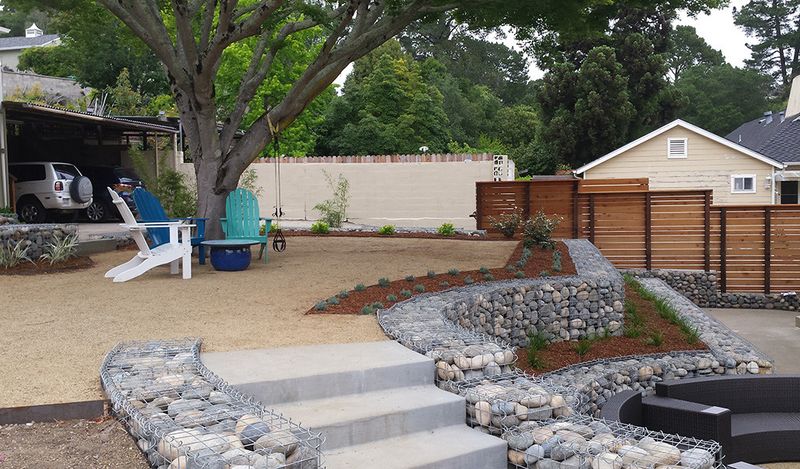
If your yard features slopes or needs definition, gabion walls filled with rocks offer a modern solution.
These wire mesh containers hold stones of various sizes, creating permeable walls that allow water drainage while preventing erosion.
Many homeowners find these structures fascinating focal points. The gaps between rocks can even become homes for small alpine plants, adding unexpected greenery to what looks like a purely structural element.
5. Colorful Mulch Flower Beds
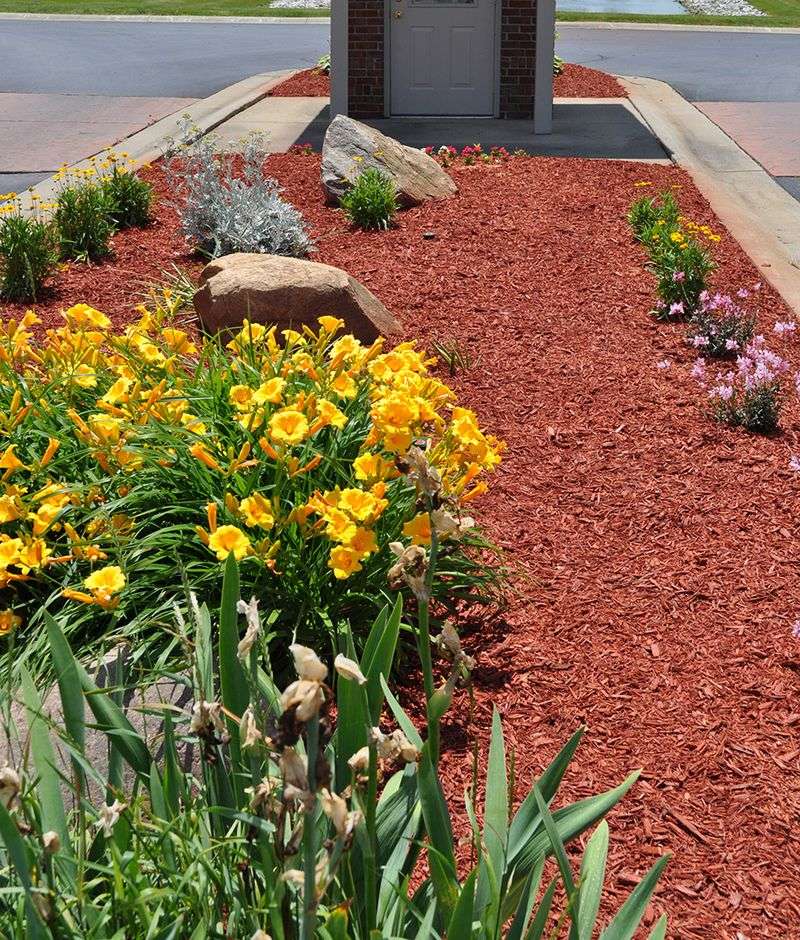
Mulch comes in various colors now, from natural browns to reds and blacks. Using colored mulch as a backdrop for flower beds creates stunning visual contrast that makes your blooms pop.
The darker the mulch, the more water it conserves by reducing evaporation. Low-water perennials surrounded by mulch require less maintenance and watering, making this option both beautiful and practical for busy homeowners who still want floral displays.
6. Desert-Inspired Rock Arrangements
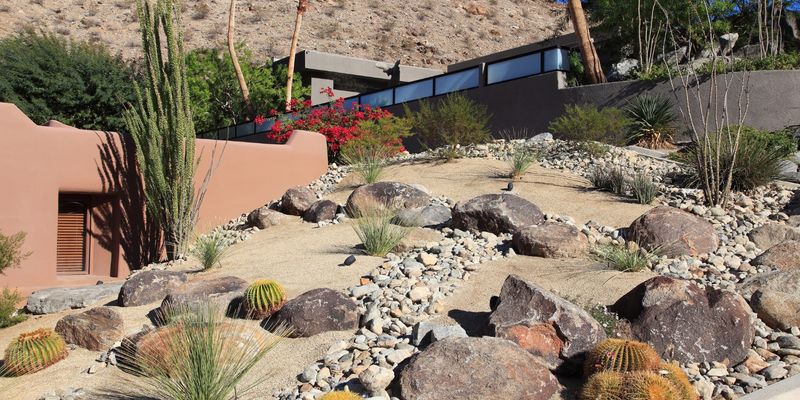
You don’t need to live in Arizona to create a stunning desert-inspired front yard. Arrangements of differently sized rocks with carefully selected cacti and agaves create dramatic landscapes that thrive with minimal water.
Crushed granite or decomposed granite between larger feature rocks prevents weeds while allowing rainfall to reach plant roots.
The morning sun hitting these landscapes creates beautiful shadow play that changes throughout the day.
7. Rain Garden With River Rock
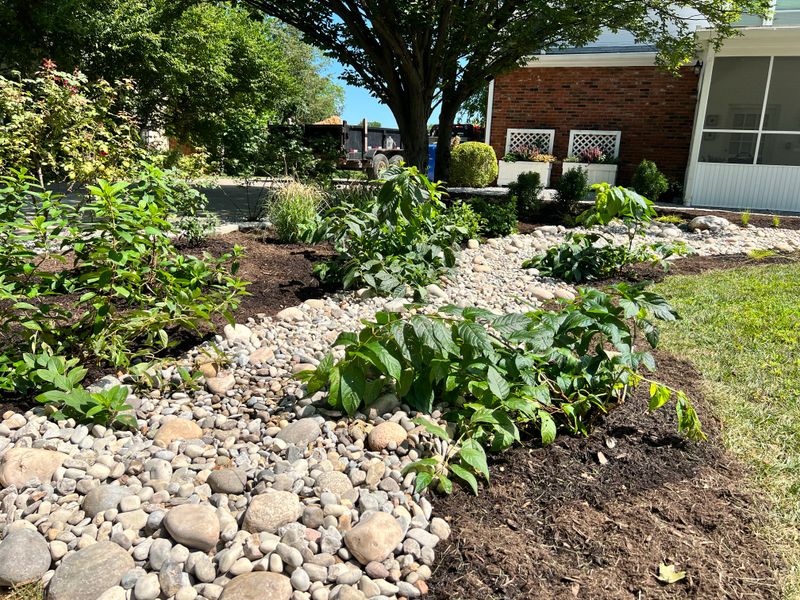
There’s something magical about turning a problem area into a solution. Low spots in yards that collect water become perfect locations for rain gardens lined with river rock.
Water-loving native plants thrive in these areas, while smooth river stones prevent erosion during heavy downpours.
This approach manages stormwater runoff naturally, reducing flooding while creating habitat for beneficial insects and birds.
8. Mediterranean Gravel Garden
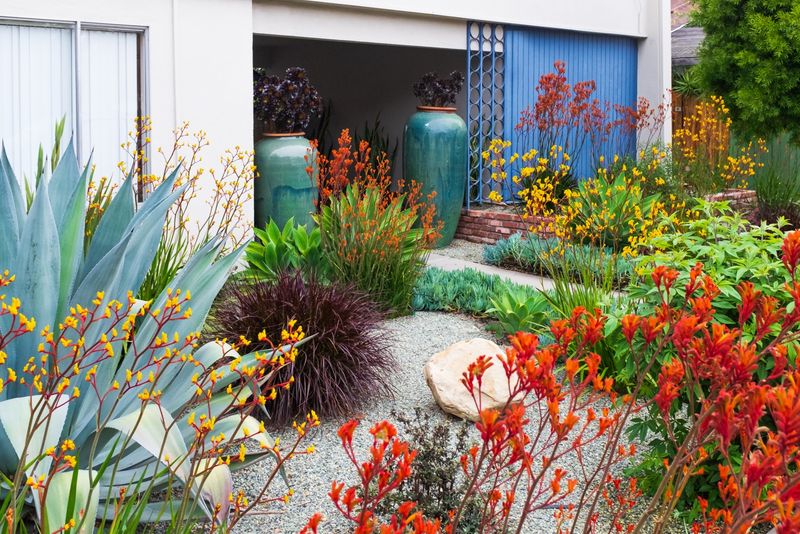
Inspired by sun-baked European landscapes, Mediterranean gravel gardens bring old-world charm to modern homes.
Lavender, rosemary, and olive trees planted in gravel require minimal water once established. The light-colored gravel reflects heat rather than absorbing it.
Small paths winding through these gardens invite exploration, while the occasional terra cotta pot adds warmth and character to the scene.
9. Layered Rock Retaining Walls
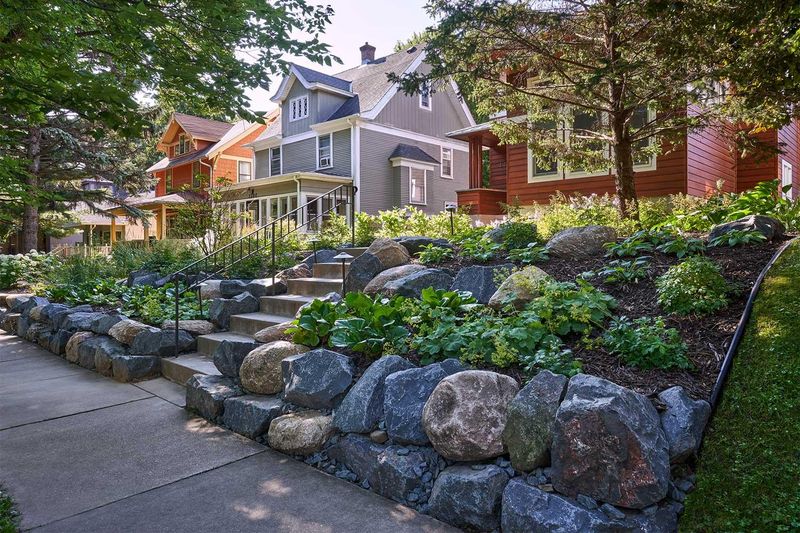
Sloped front yards present unique challenges that layered rock walls solve beautifully. Stacked flagstone or fieldstone creates natural-looking terraces that prevent erosion while providing planting pockets.
The stone’s thermal mass absorbs heat during the day and releases it at night, creating microclimate zones where different plants can thrive.
Cascading groundcovers softening the edges of these walls blend the hardscape elements with the landscape.
10. Permeable Pebble Pathways
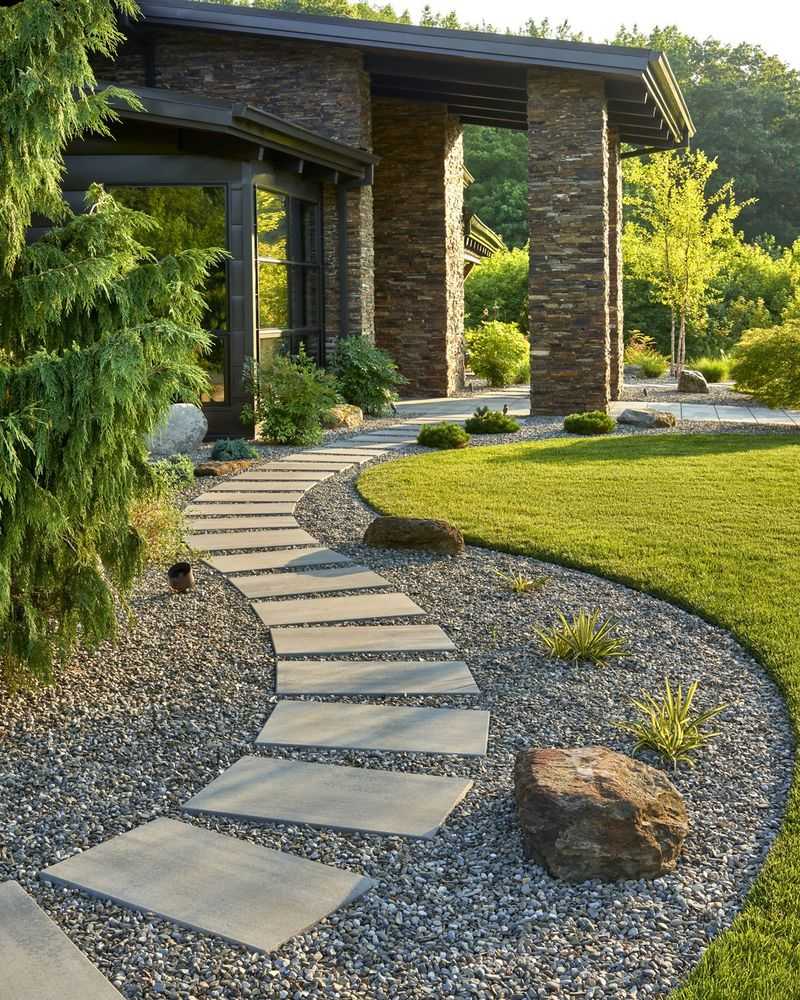
How about replacing concrete walkways with pebble paths that allow rainwater to filter through? These permeable surfaces reduce runoff while adding natural texture to your landscape.
Mixing pebble sizes and colors creates visual interest. For stability, consider edging these paths with larger rocks or metal borders to keep the pebbles contained, especially in areas with frequent foot traffic.
11. Mulched Pollinator Garden
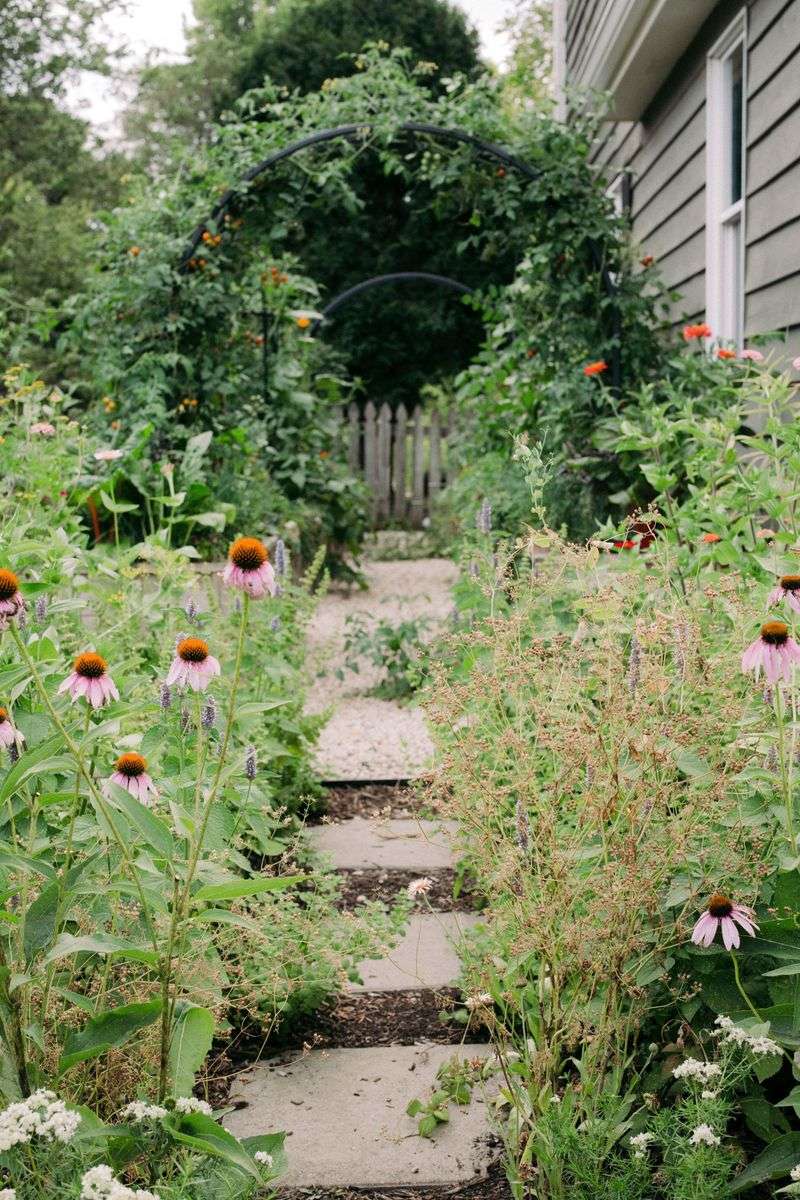
Transforming your front yard into a haven for bees and butterflies starts with native flowering plants and organic mulch.
The mulch helps retain moisture while suppressing weeds, giving your pollinator plants the best chance to thrive. Pine straw or shredded leaves make excellent mulch choices that break down to enrich the soil.
Your neighbors will marvel at the colorful visitors buzzing around your yard while appreciating your contribution to local ecosystems.
12. Dry Creek Bed Feature
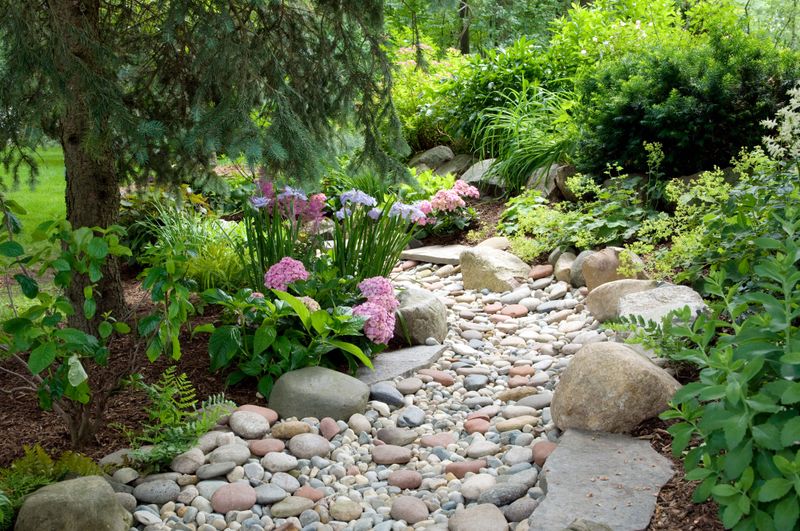
Though it might not contain water most of the time, a dry creek bed brings dynamic movement to flat front yards.
River rocks of varying sizes create the illusion of a natural waterway while actually serving as a drainage solution during heavy rains. Ornamental grasses and moisture-loving plants along the edges enhance the natural look.
When properly constructed with landscape fabric underneath, these features remain virtually maintenance-free for years.
13. Succulent Rock Garden
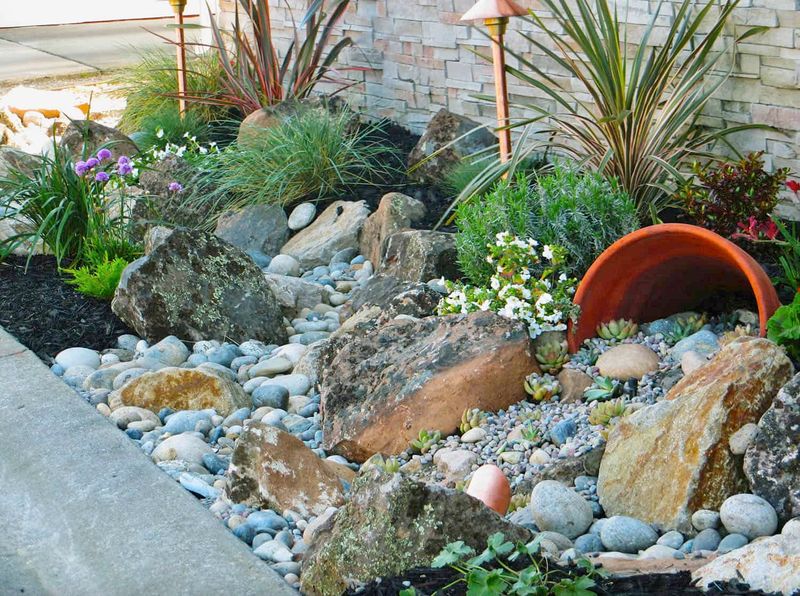
Combining colorful succulents with interesting rock formations creates magical mini-landscapes that thrive in full sun. The rocks store heat that helps protect tender succulents during cooler nights.
A layer of inorganic mulch like decomposed granite between plants prevents soil splashing onto the fleshy leaves during rain.
This arrangement works particularly well near entrances where visitors can appreciate the intricate details and subtle color variations of your succulent collection.
14. Moonlight-Reflecting White Rock Beds
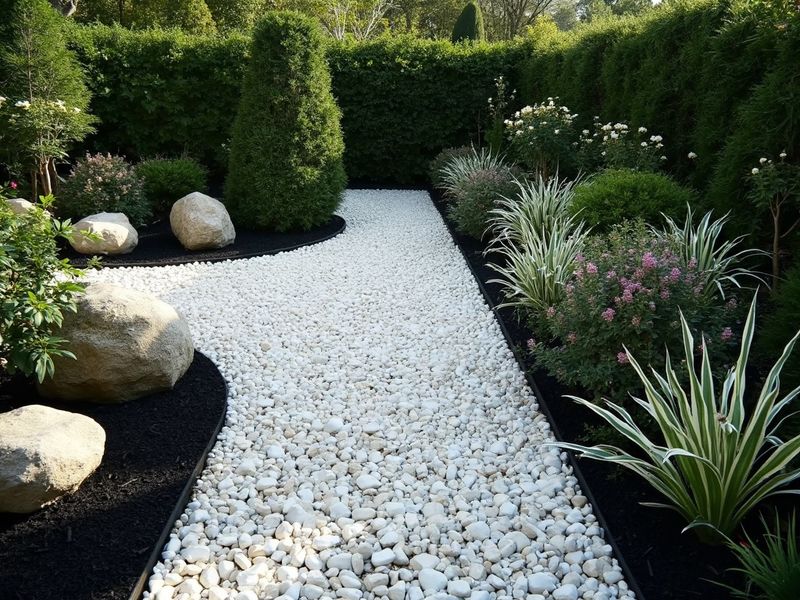
White marble chips or quartz rocks create stunning nighttime landscapes by reflecting moonlight and landscape lighting.
These bright stones illuminate pathways naturally while providing striking contrast against green foliage during the day. For areas where nothing seems to grow well, white rock beds offer a low-maintenance solution.
They stay cooler than darker materials, making them ideal for hot climates where heat absorption is a concern.
15. Rustic Mulch And Boulder Combination
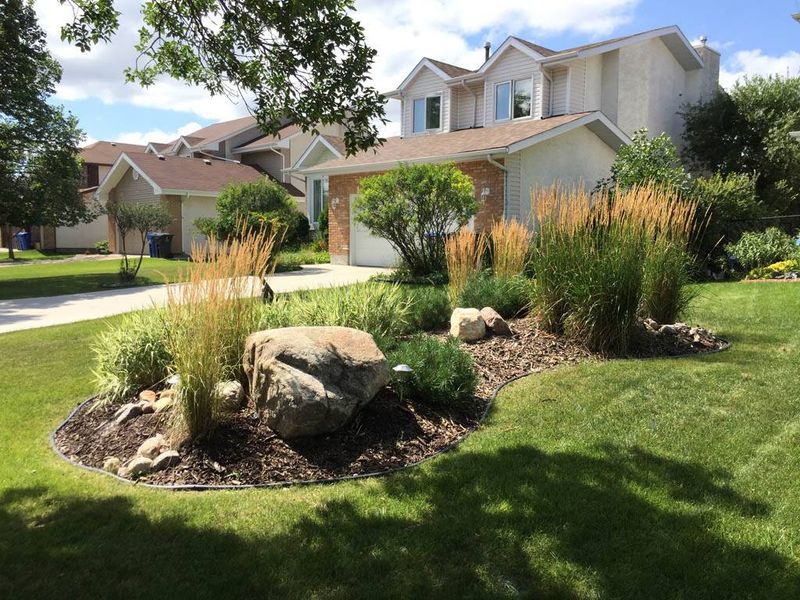
Large boulders partially buried in the landscape create the impression they’ve always been there, while wood mulch softens the scene.
This combination mimics natural forest edges where rock outcroppings meet woodland floors. Ferns and woodland wildflowers planted around the boulders thrive in the microclimate created by the rocks.
The mulch gradually breaks down to feed these shade-loving plants, creating a self-sustaining mini ecosystem right in your front yard.
16. Geometric Gravel And Concrete Pavers
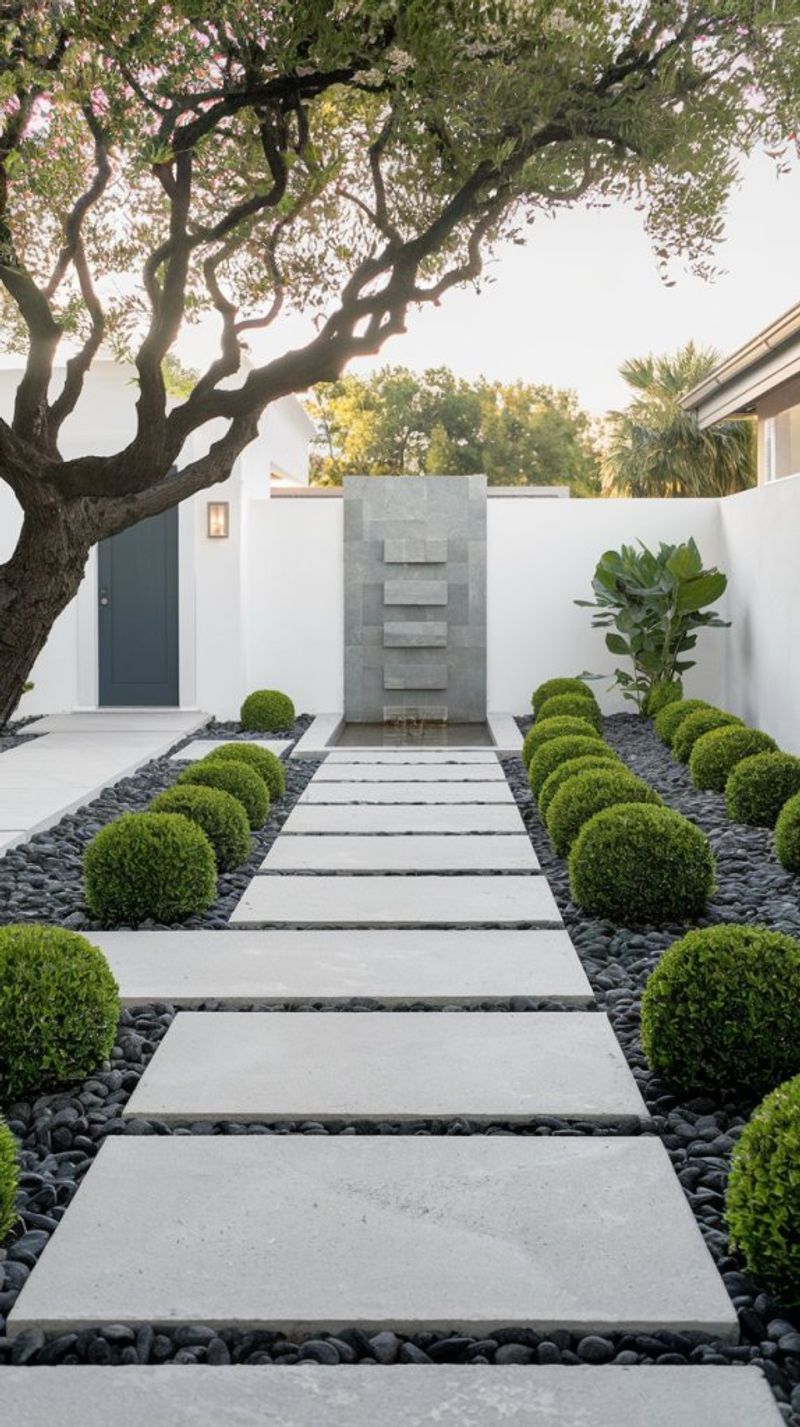
Modern homes benefit from geometric patterns created with concrete pavers set in gravel. The clean lines complement contemporary architecture while providing practical walking surfaces.
The spaces between pavers filled with fine gravel allow rainwater to percolate into the soil rather than running off.
Low-growing groundcovers like creeping thyme planted between some pavers soften the hardscape elements while releasing pleasant fragrance when stepped upon.
17. Mulched Native Plant Borders
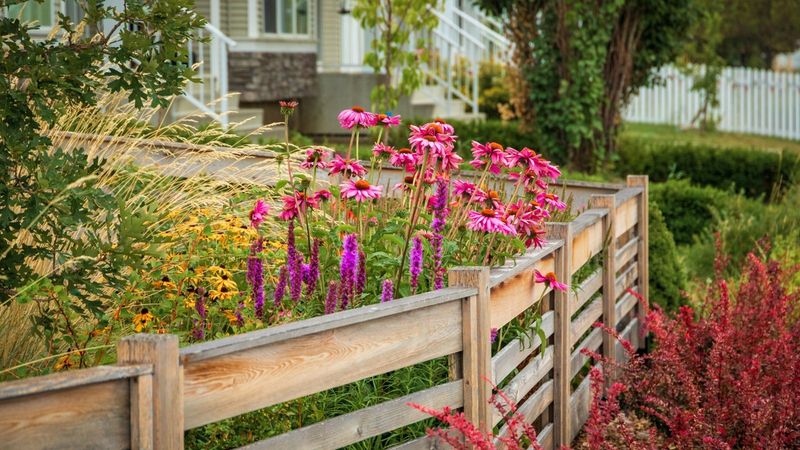
Native plants surrounded by natural mulch create wildlife-friendly borders that frame your property beautifully.
Since these plants evolved locally, they require minimal care once established and provide food and shelter for local birds and insects. Shredded hardwood mulch complements the natural aesthetic while retaining soil moisture.
The rich brown tones of the mulch highlight the diverse textures and colors of native flora throughout the changing seasons.
18. Rock-Rimmed Mulch Beds With Ornamental Trees
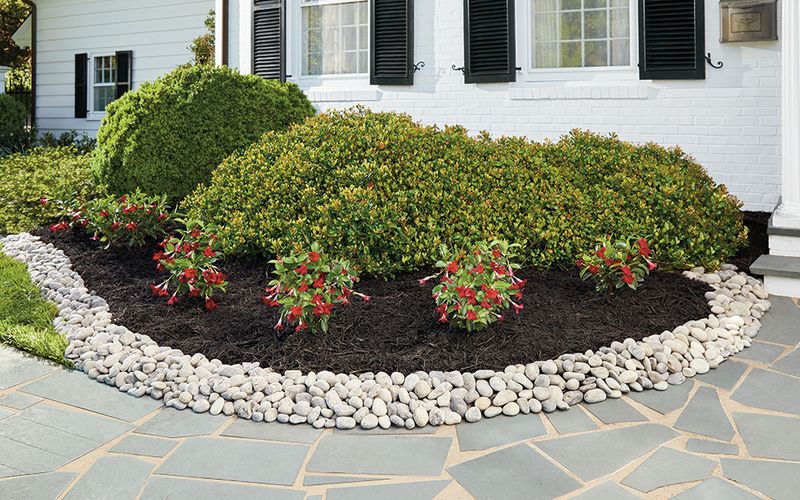
Small ornamental trees become focal points when planted in circular mulch beds rimmed with decorative rocks.
This arrangement creates clean edges that separate planting areas from lawns or pathways. The rocks prevent mulch from washing away during heavy rains.
Japanese maples, dwarf conifers, or flowering dogwoods work beautifully as centerpieces for these islands, providing year-round interest through changing foliage, flowers, or architectural form.
19. Terraced Rock Wall With Cascading Plants
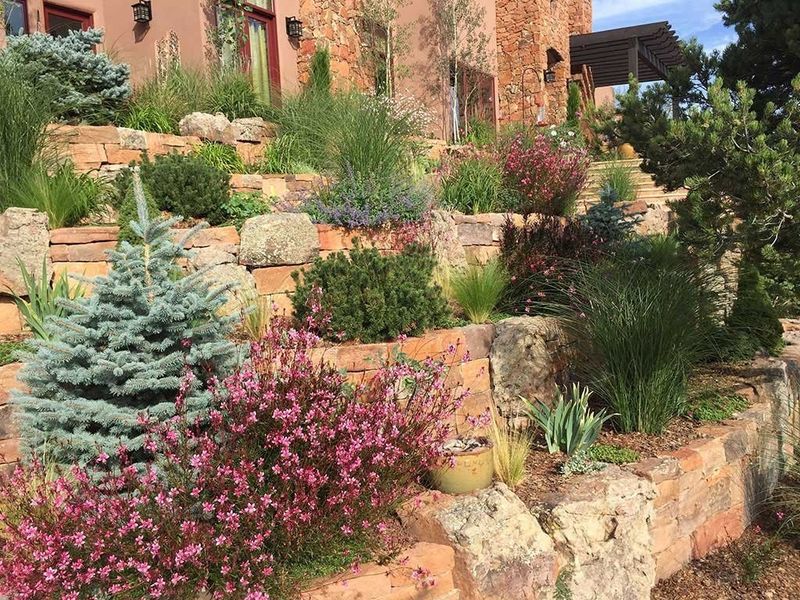
Steep front yards transform from problem areas to stunning features with terraced rock walls. Each level creates a flat planting area where cascading plants can spill over the edges, softening the stonework.
Sedums, creeping phlox, and trailing rosemary thrive in these conditions, requiring minimal water once established.
The stone absorbs heat during the day, creating a warm microclimate that extends the growing season for these plants in cooler regions.
20. Mulch-Covered Spiral Herb Garden
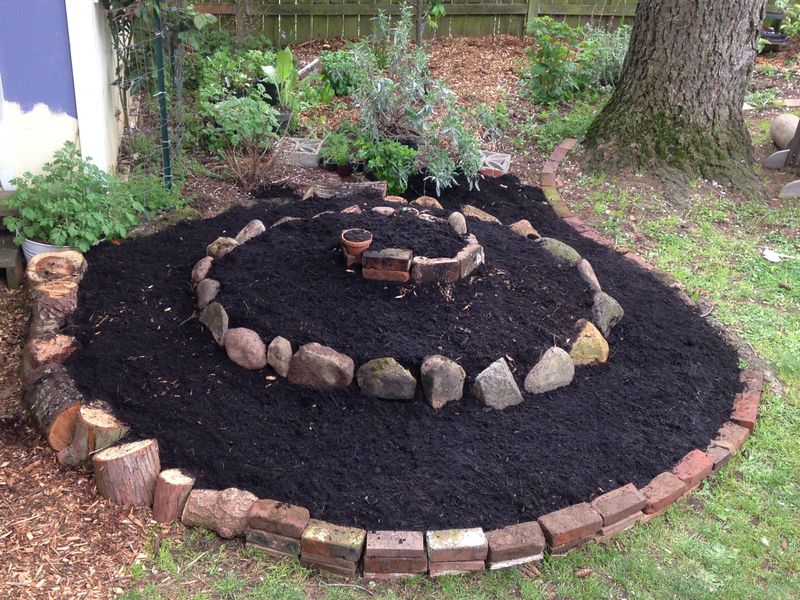
Step into a world of aromatic bliss with a mulch-covered spiral herb garden. This enchanting setup not only tantalizes the senses but also maximizes space.
Design the spiral to ascend gently, allowing each herb to bask in sunlight while sharing nutrients harmoniously. As you stroll through this herbal haven, the earthy scent of mulch intensifies the experience.
Ideal for culinary enthusiasts, this garden offers fresh herbs at your fingertips. It’s an artistic and practical solution for those seeking sustainable beauty. Enjoy the simplicity of nature’s bounty right at your doorstep, all year round.
21. Rock-Edged Reflecting Pond
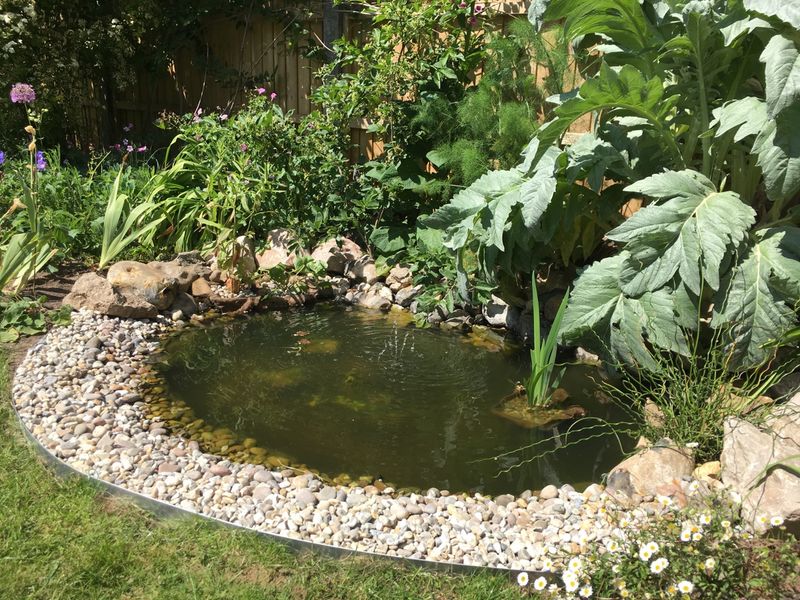
Discover tranquility with a rock-edged reflecting pond. This serene feature mirrors the sky and surrounding foliage, creating a peaceful retreat.
Arrange smooth, round rocks to outline the pond, enhancing its natural allure. Whether observing the delicate dance of water lilies or simply soaking in the calm, this pond offers quiet solace.
A reflecting pond not only elevates your landscape but also invites wildlife, fostering a diverse ecosystem. Enjoy the gentle symphony of nature and the meditative calm it brings to your front yard, transforming it into a serene sanctuary.

